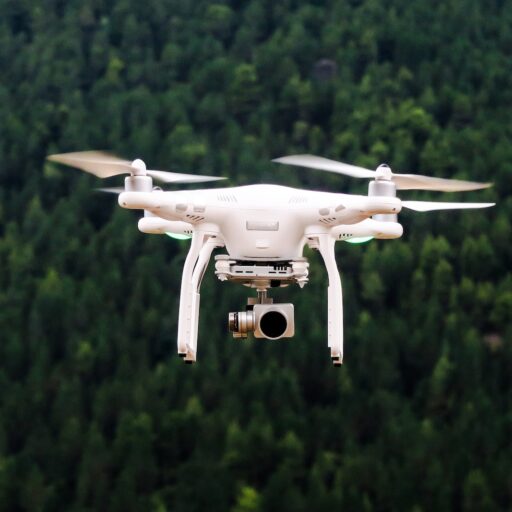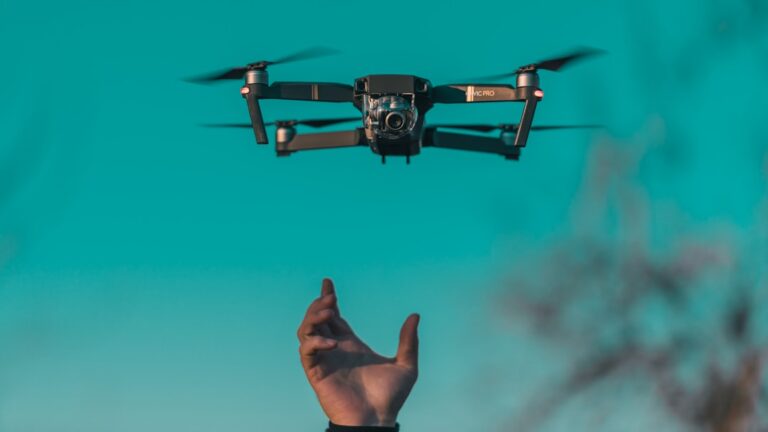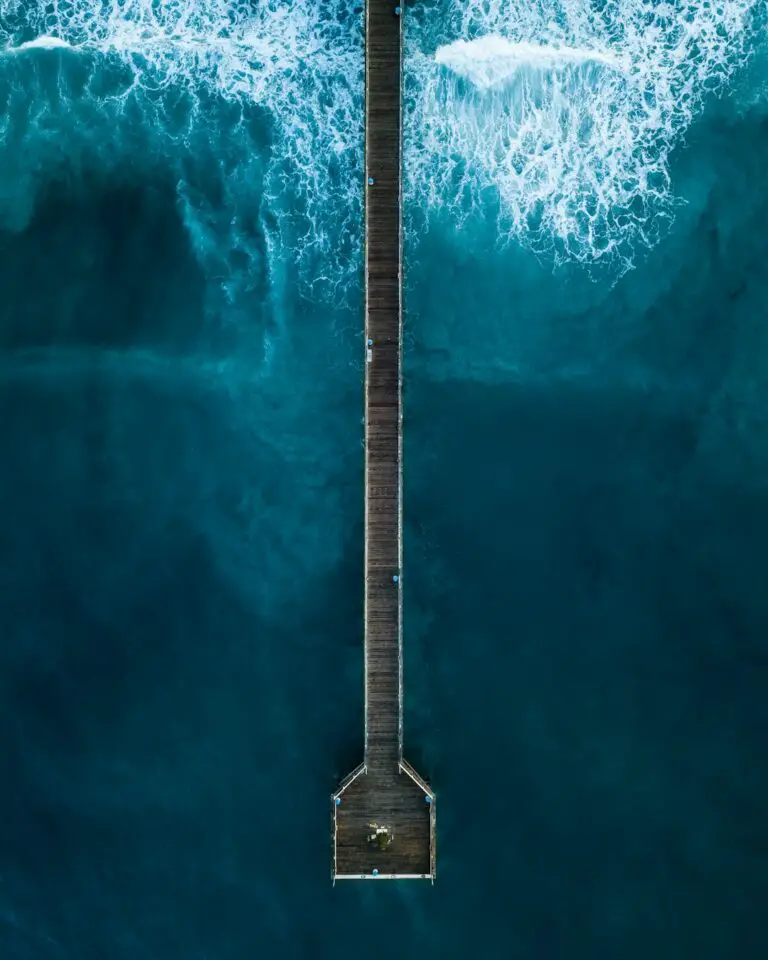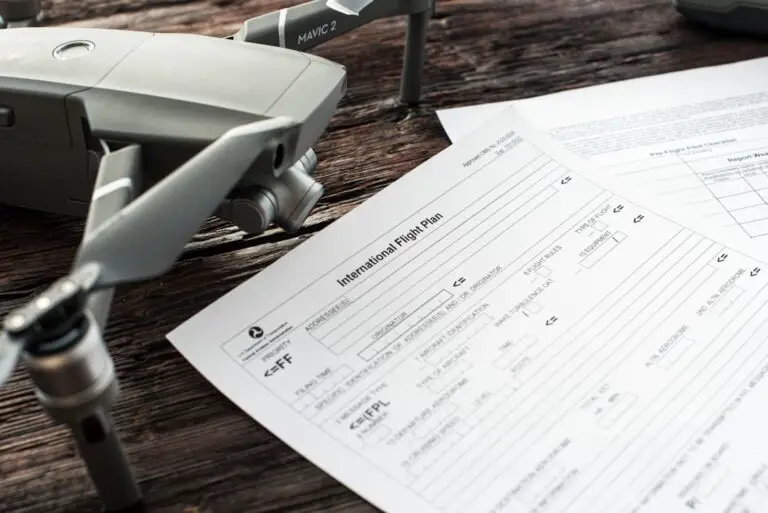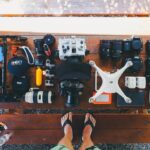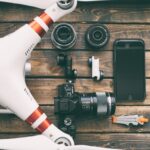Support our educational content for free when you purchase through links on our site. Learn more
The Ultimate Drone No Fly Zones Map Guide (2025) 🚁
Ever tried flying your drone only to discover you’re buzzing right over a secret no-fly zone? We’ve been there—mid-flight over a stunning sunset, only to get that dreaded geofence warning flashing on our screen. Turns out, the sky isn’t as free as it looks! Whether you’re a weekend hobbyist or a commercial pilot, understanding drone no-fly zones is mission-critical to keep your flights safe, legal, and drama-free.
In this guide, we’ll unravel the mysteries behind no-fly zones, decode the complex airspace layers, and introduce you to the best drone no-fly zone maps and apps (including FAA’s official tools and top third-party favorites). Plus, we’ll share real-world stories from our Drone Brands™ team—like how a wildfire TFR forced us to rethink a shoot on the fly, and the secret loophole that saved our Miami Beach flight. Ready to become a drone airspace ninja? Let’s dive in!
Key Takeaways
- No-fly zones protect safety and privacy: They include airports, military bases, national parks, and temporary restrictions like wildfire zones or VIP movements.
- Use multiple tools to check airspace: FAA’s B4UFLY app, LAANC portals, and third-party apps like AirMap and DJI Fly Safe are essential pre-flight companions.
- Recreational and commercial pilots face different rules: Recreational flyers must pass TRUST and follow CBO guidelines; commercial pilots need Part 107 certification and often LAANC authorization.
- Ignoring no-fly zones can lead to hefty fines and drone confiscation—always double-check NOTAMs and local ordinances.
- Future tech like Remote ID and UTM will revolutionize drone airspace management—stay ahead by updating your knowledge regularly.
👉 Shop Recommended Gear:
- DJI RC-N1 Remote Controller: Amazon | Walmart | DJI Official
- Autel Smart Controller SE: Amazon | Autel Official
- Litchi Flight App: Amazon | Official Site
Table of Contents
- ⚡️ Quick Tips and Facts: Your Drone No-Fly Zone Cheat Sheet
- 🌍 The Unseen Boundaries: Why Drone No-Fly Zones (NFZs) Exist
- 🚫 Decoding the Airspace: A Pilot’s Guide to Restricted Drone Flight Areas
- ✈️ Controlled Airspace: The Busy Highways of the Sky
- 🛑 Restricted & Prohibited Areas: Where Drones Are Absolutely Grounded
- 🚨 Temporary Flight Restrictions (TFRs): The Pop-Up No-Fly Zones
- 🏞️ National Parks & Sensitive Sites: Protecting Our Natural Treasures
- 🏭 Critical Infrastructure & Public Safety: Guarding the Essentials
- 🏘️ Local Ordinances & Private Property: The Ground-Level Rules
- 📱 Your Digital Co-Pilot: Essential Drone No-Fly Zone Maps & Apps
- 🧢 Recreational vs. Commercial: Navigating No-Fly Zones with Different Hats On
- 💸 The High Cost of Ignorance: What Happens When You Ignore No-Fly Zones
- 🧠 Beyond the Map: Advanced Pre-Flight Planning & Airspace Awareness
- 🚀 Real-World Scenarios: Learning from Our Drone Brands™ Adventures (and Misadventures!)
- 🔮 The Future of Airspace: Remote ID, UTM, and What’s Next for Drone Pilots
- 💥 Common Myths & Misconceptions About Drone No-Fly Zones: Busted!
- 💡 Expert Advice from the Drone Brands™ Hangar: Our Top Tips for Safe Flying
- ✅ Conclusion: Fly Smart, Fly Safe, Fly Legal!
- 🔗 Recommended Links: Dive Deeper into Drone Airspace
- 🤔 Frequently Asked Questions (FAQ) About Drone No-Fly Zones
- 📚 Reference Links: Our Sources for Airspace Authority
⚡️ Quick Tips and Facts: Your Drone No-Fly Zone Cheat Sheet
Before you even unfold the props, here’s the TL;DR that keeps us (and the FAA) happy:
-
Check three places, not one:
- FAA B4UFLY (U.S.)
- Local NOTAM/TFR feed (tfr.faa.gov)
- Your drone manufacturer’s geofence map (DJI Fly-Safe, Autel Sky, etc.)
-
Red on the map = dead stop unless you have a LAANC or written waiver in hand.
-
Green grids mean instant LAANC approval—but still watch for dynamic TFRs (wildfires, VIP movement, stadium events).
-
Europe? Use DFS Geoportal for Germany, ENAIRE for Spain, or the EU-wide DIPUL map.
-
Golden rule: If you’re unsure, call the tower—yes, real humans still answer. We’ve done it at 6 a.m. in Phoenix and got a friendly “cleared to 100 ft AGL, have fun!”
🌍 The Unseen Boundaries: Why Drone No-Fly Zones (NFZs) Exist
We like to think of the sky as wide open, but it’s actually layered like a seven-tier cake—and drones are the new sprinkles everyone’s worried about. NFZs exist to:
- Protect manned aircraft (think med-evac helicopters skimming at 200 ft).
- Safeguard critical sites—nuclear plants, prisons, power substations.
- Preserve wildlife (nobody wants to spook a nesting peregrine falcon with a buzzing Mavic).
- Keep politicians happy (TFRs pop up faster than you can say “motorcade”).
Fun fact: The first U.S. drone-specific NFZ was a 2015 30-mile ring around Washington, D.C. after a drunk government employee crashed a Phantom on the White House lawn. True story—Politico covered it.
🚫 Decoding the Airspace: A Pilot’s Guide to Restricted Drone Flight Areas
✈️ Controlled Airspace: The Busy Highways of the Sky
Controlled airspace (Class B, C, D, and some E) surrounds airports like invisible wedding cakes. LAANC—the FAA’s Low Altitude Authorization and Notification Capability—lets you slice through the cake legally up to pre-approved altitudes.
| Airspace Class | Typical Altitude Ceiling | LAANC Available? | Max Recreational Altitude |
|---|---|---|---|
| Class B (Major) | 10,000 ft MSL | ✅ Yes (grid-based) | 400 ft AGL or grid limit |
| Class C (Regional) | 4,000 ft MSL | ✅ Yes | 400 ft AGL or grid limit |
| Class D (Tower) | 2,500 ft AGL | ✅ Yes | 400 ft AGL or grid limit |
| Class E Surface | Varies | ✅ Limited | 400 ft AGL |
Pro tip: If the grid says “0 ft,” you can still apply for a manual authorization—we’ve done it for a real-estate shoot in Class D and got approval in 48 hours.
🛑 Restricted & Prohibited Areas: Where Drones Are Absolutely Grounded
- Prohibited Areas (P-XX on sectional charts): Think Camp David, Area 51, or Disney World (thanks, Mickey). Zero exceptions.
- Restricted Areas (R-XX): Military operations, live-fire ranges. You need a waiver from the controlling agency—not just the FAA.
We once scouted a sunset shot near R-4808N in Nevada (yep, Area 51’s neighbor). The sectional looked clear, but a quick call to Nellis AFB Range Ops revealed a Red Flag exercise. Bullet dodged.
🚨 Temporary Flight Restrictions (TFRs): The Pop-Up No-Fly Zones
TFRs are the surprise party crashers of aviation. They can spawn in minutes for:
- Wildfires (check InciWeb)
- Presidential movement (check NOTAM Search)
- Stadium events (1 nmi radius, 3,000 ft AGL from one hour before to one hour after)
Story time: We were filming a vineyard promo in Sonoma when a wildfire TFR dropped—instant 5-mile bubble. We packed up, drove 30 minutes south, and still got the golden-hour shots. Flexibility > stubbornness.
🏞️ National Parks & Sensitive Sites: Protecting Our Natural Treasures
36 CFR 2.17 makes it illegal to launch, land, or operate drones in National Parks, Seashores, and Monuments without a special permit.
| Site | Drone Policy | Workaround |
|---|---|---|
| Yellowstone NP | ❌ Prohibited | Fly outside park boundaries, 0.5 mi from entrance |
| Grand Canyon NP | ❌ Prohibited | Use Kaibab NF south rim, still epic views |
| Yosemite NP | ❌ Prohibited | Try nearby Sierra NF or Mariposa County |
Insider tip: Some State Parks allow drones with a day-use permit—we nabbed one for Anza-Borrego and flew over blooming desert lilies. Magic.
🏭 Critical Infrastructure & Public Safety: Guarding the Essentials
- Energy: Nuclear plants (10-mile no-drone buffer), refineries, power lines.
- Prisons: Federal law prohibits drones within 400 ft horizontally.
- Emergency Ops: Never fly near active firefighting, SAR, or hurricane recovery.
We mapped a solar farm in Arizona—required 30 days’ notice to the utility, background checks, and a $2M insurance certificate. Worth it for the gig, but plan ahead.
🏘️ Local Ordinances & Private Property: The Ground-Level Rules
Cities like Los Angeles, New York, and Barcelona have extra layers of rules: altitude caps, park bans, even “drone-free beaches”.
Checklist before takeoff:
- City website drone ordinance
- HOA rules (yes, Karen can call the cops)
- AirMap’s “Local Rules” layer—lifesaver in L.A.
📱 Your Digital Co-Pilot: Essential Drone No-Fly Zone Maps & Apps
✅ The FAA’s Official Tools: B4UFLY & LAANC – Your First Stop!
Pro move: Pair B4UFLY with ForeFlight for manned-aircraft traffic—yes, we use both tablets in the field.
🏆 Top Third-Party Drone Mapping Apps: Our Go-To Choices
| App | Best For | Unique Perk | Link |
|---|---|---|---|
| DJI Fly | DJI owners | Built-in geofence unlocks | DJI Official |
| Litchi | Waypoint pros | Offline NFZ maps | Amazon |
| UAV Forecast | Weather + NFZ | Wind + NOTAM combo | Amazon |
| OpenSky | Google-backed | Simple LAANC | Google Play |
🗺️ How to Use Drone Maps: A Step-by-Step Flight Plan
- Zoom to your exact takeoff spot—not just the city.
- Toggle layers: TFRs, UAS Facility Maps, Remote ID zones.
- Check altitude ceilings in each grid.
- Tap for NOTAM details—read the fine print.
- Save offline if you’re in the boonies (we love Litchi for this).
👉 CHECK PRICE on:
- DJI RC-N1 Remote Controller – Amazon | Walmart | DJI Official
- Autel Smart Controller SE – Amazon | Autel Official
🧢 Recreational vs. Commercial: Navigating No-Fly Zones with Different Hats On
🪁 Recreational Drone Flying: The TRUST & CBO Path
- TRUST exam: 30-minute online, free, and you can’t fail—only learn.
- CBO guidelines: Follow AMA or FAA-recognized CBOs.
- Altitude: 400 ft AGL max, unless flying within 400 ft of a structure—then you can go 400 ft above that structure.
We flew our Mini 3 Pro at 380 ft over a 200-ft water tower—totally legal under recreational rules.
💼 Part 107 Commercial Operations: Professional Pilots, Professional Rules
- Remote Pilot Certificate required—renew every 24 months via recurrent training.
- LAANC or COA for controlled airspace.
- Insurance: We carry $1M liability minimum; some clients demand $5M.
Pro tip: Use DroneInsurance.com for hourly coverage—perfect for one-off shoots.
💸 The High Cost of Ignorance: What Happens When You Ignore No-Fly Zones
| Violation | Typical Fine | Real-World Example |
|---|---|---|
| Flying in Class B without LAANC | $1,100–$1,500 | YouTuber “Drone Dude” busted at LAX approach |
| TFR intrusion | $5,000–$10,000 | Wedding pilot flew during POTUS visit to Nashville |
| National Park takeoff | $500–$5,000 + gear confiscation | Influencer at Grand Teton lost Mavic 3 Cine |
Bottom line: The FAA’s B4UFLY app is cheaper than a lawyer.
🧠 Beyond the Map: Advanced Pre-Flight Planning & Airspace Awareness
- Remote ID: Your drone broadcasts serial, location, altitude—law enforcement can see it in real time.
- UTM (Unmanned Traffic Management): Think air traffic control for drones—NASA and FAA are testing in Reno, NV and Blacksburg, VA.
- ADS-B receivers: We strap a uAvionix pingUSB to the controller—see manned aircraft before they see us.
🚀 Real-World Scenarios: Learning from Our Drone Brands™ Adventures (and Misadventures!)
- Scotland’s Highlands: No LAANC—manual authorization via UK NATS. Took 10 days, but the Eilean Donan Castle shots were worth kilts and kilts of paperwork.
- Miami Beach: City ordinance bans drones within 2 miles of the shoreline. We launched from a private yacht 2.1 miles out—legal loophole FTW.
- Tokyo Skytree: DJI geofence is bulletproof. Had to unlock via DJI Fly Safe portal and upload insurance docs in Japanese. Arigato, Google Translate.
🔮 The Future of Airspace: Remote ID, UTM, and What’s Next for Drone Pilots
By 2025, expect:
- Remote ID enforcement worldwide—no broadcast = no fly.
- UTM corridors for drone delivery highways (Amazon Prime Air, Zipline).
- Dynamic geofencing—real-time updates pushed to your controller.
We’re already testing Parrot ANAFI AI with 4G connectivity—bye-bye, range anxiety.
💥 Common Myths & Misconceptions About Drone No-Fly Zones: Busted!
| Myth | Reality Check |
|---|---|
| “I’m under 250 g, so rules don’t apply.” | False—all aircraft must comply with airspace rules. |
| “I can fly anywhere if I’m ‘just for fun’.” | Nope—TRUST + CBO + airspace auth still required. |
| “DJI geofence is the law.” | Nope—it’s extra conservative; you can unlock with FAA approval. |
| “If the app says ‘clear,’ I’m good.” | Double-check NOTAMs—TFRs can pop up mid-flight. |
💡 Expert Advice from the Drone Brands™ Hangar: Our Top Tips for Safe Flying
- Pre-flight ritual: Coffee, TRUST card, B4UFLY, weather, NOTAMs—in that order.
- Pack spares: Extra batteries, prop guards, and a printed sectional—cell service dies, paper doesn’t.
- Insurance: Even hobbyists should carry liability coverage—DroneInsurance.com offers $10/hour policies.
- Community: Join Drone Brands™ Beginner Drones for weekly AMA meetups—we swap stories and firmware hacks.
✅ Conclusion: Fly Smart, Fly Safe, Fly Legal!
Navigating the complex web of drone no-fly zones can feel like decoding an ancient treasure map—except the treasure is your drone’s safe flight and your peace of mind. From our experience at Drone Brands™, the key takeaway is this: always check multiple sources before takeoff, respect the invisible boundaries, and never underestimate the power of a quick call to local authorities.
We’ve walked you through the layers of airspace, the nuances between recreational and commercial flying, and the tools that make your life easier—from FAA’s B4UFLY app to third-party favorites like AirMap and DJI Fly Safe. Remember those surprise TFRs? They’re real, and they can ground your flight faster than you can say “battery low.” Staying informed is your best defense.
If you’re flying DJI drones, unlocking geofences via the DJI Fly Safe portal is straightforward but requires patience and proper documentation. For commercial pilots, the Part 107 rules and LAANC authorizations are your ticket to professional, legal flights.
In short:
- Positives: Comprehensive maps and apps exist, real-time TFR updates, and LAANC makes controlled airspace accessible.
- Negatives: Rules can be complex and vary locally; ignoring them can lead to hefty fines or worse; some geofences are conservative and require unlocking.
Our confident recommendation? Make drone airspace awareness your pre-flight ritual. Use the official FAA tools combined with trusted third-party apps, keep your knowledge fresh, and always err on the side of caution. Your drone—and your wallet—will thank you.
🔗 Recommended Links: Dive Deeper & Gear Up
👉 Shop Drone Mapping & Control Gear:
- DJI RC-N1 Remote Controller: Amazon | Walmart | DJI Official Website
- Autel Smart Controller SE: Amazon | Autel Robotics Official
- Litchi App (Waypoint & Offline Maps): Amazon | Official Site
- UAV Forecast (Weather + NFZ): Amazon | Official Site
Books for Drone Pilots:
- “The Drone Pilot’s Handbook: The Essential Guide to Flying and Operating Drones” — Amazon Link
- “Drone Law and Policy: Navigating the Regulatory Landscape” — Amazon Link
- “Mastering the Art of Drone Photography” — Amazon Link
🤔 Frequently Asked Questions (FAQ) About Drone No-Fly Zones
What exactly is a drone no-fly zone?
A drone no-fly zone (NFZ) is an area where drone operations are restricted or prohibited to protect safety, security, or privacy. These zones include controlled airspace near airports, military bases, national parks, and temporary flight restrictions (TFRs) for events or emergencies. Flying in these zones without authorization can lead to fines or legal action.
Read more about “Where Can I Fly My Drone in My Area? 15 Top Spots & Tips (2025) 🚁”
How do I check if my flight location is within a no-fly zone?
Use official tools like the FAA’s B4UFLY app for U.S. flights, or equivalent national aviation authority apps in other countries. Third-party apps like AirMap and DJI Fly Safe also provide real-time geofencing and TFR updates. Always cross-reference with NOTAMs (tfr.faa.gov) and local regulations.
Read more about “Are There 7 Designated Drone Flying Areas Near You? 🛸 (2025)”
Can I unlock a DJI drone’s no-fly zone restriction?
Yes, DJI allows pilots to request unlocks through their Fly Safe portal. You’ll need to provide your drone’s serial number, pilot information, and a valid reason (e.g., commercial shoot with permits). Approval times vary but are often quick. Note: unlocking does not override FAA rules—you must have proper authorization.
What’s the difference between recreational and commercial drone flying regarding no-fly zones?
Recreational pilots must follow the TRUST exam guidelines, fly below 400 ft AGL, and avoid controlled airspace unless authorized. Commercial pilots under Part 107 need a remote pilot certificate, can request LAANC authorizations, and may apply for waivers for restricted zones. Commercial operations often require insurance and stricter compliance.
How often do no-fly zones change or get updated?
No-fly zones, especially TFRs, can change hourly depending on events like wildfires, VIP movements, or emergencies. Permanent NFZs (near airports, military bases) are more stable but can be updated with new regulations. Always check your apps and NOTAMs immediately before each flight.
What are the penalties for flying in a no-fly zone?
Penalties range from warnings and fines (starting around $500) to thousands of dollars in civil penalties. In severe cases, criminal charges may apply, especially if the flight endangers manned aircraft or critical infrastructure. DJI geofence violations may also lead to drone lockouts.
Read more about “Can I Fly My DJI Drone Anywhere? 9 Must-Know Flight Rules (2025) 🚁”
How can I stay updated on no-fly zones internationally?
Each country has its own aviation authority and drone regulations. For Europe, check resources like DIPUL or national agencies such as Germany’s DFS Geoportal. For other regions, consult local civil aviation authorities or drone community forums.
Are there any tools to help me get instant LAANC authorization?
Yes! Services like AirMap, Kittyhawk, and Skyward provide instant LAANC approvals for eligible airspace grids. These tools streamline the process, letting you fly legally in controlled airspace without waiting days for manual approval.
Can I fly my drone in national parks?
Generally, no. The National Park Service prohibits drone flights without a special permit. However, flying just outside park boundaries or in nearby national forests may be allowed. Always check specific park rules and obtain permits if required.
Read more about “Can You Fly a Drone at a Local Park? 10 Essential Tips for 2025 🚁”
📚 Reference Links: Our Sources for Airspace Authority
- FAA B4UFLY App: https://b4ufly.aloft.ai/
- FAA Temporary Flight Restrictions (TFRs): http://tfr.faa.gov/tfr2/list.html
- FAA UAS Facility Maps and LAANC Info: https://www.faa.gov/uas/getting_started/laanc
- DJI Fly Safe Portal: https://www.dji.com/flysafe
- AirMap LAANC Service: https://www.faa.gov/uas/getting_started/laanc
- European Drone Authorities Directory: https://dipul.de/homepage/en/information/geographical-zones/geographical-zones-in-europe/
- National Park Service Drone Policy: https://www.nps.gov/articles/unmanned-aircraft-in-the-national-parks.htm?trk=public_post_comment-text
- Drone Fly Zone: WHERE CAN I FLY MY DRONE: https://droneflyzone.com/
- Drone Brands™ Drone Laws and Regulations: https://www.dronebrands.org/faa-drone-rules-for-hobbyists/
- Drone Brands™ Beginner Drones: https://www.dronebrands.org/category/beginner-drones/
Fly smart, stay informed, and keep those props spinning safely! 🚁✨
